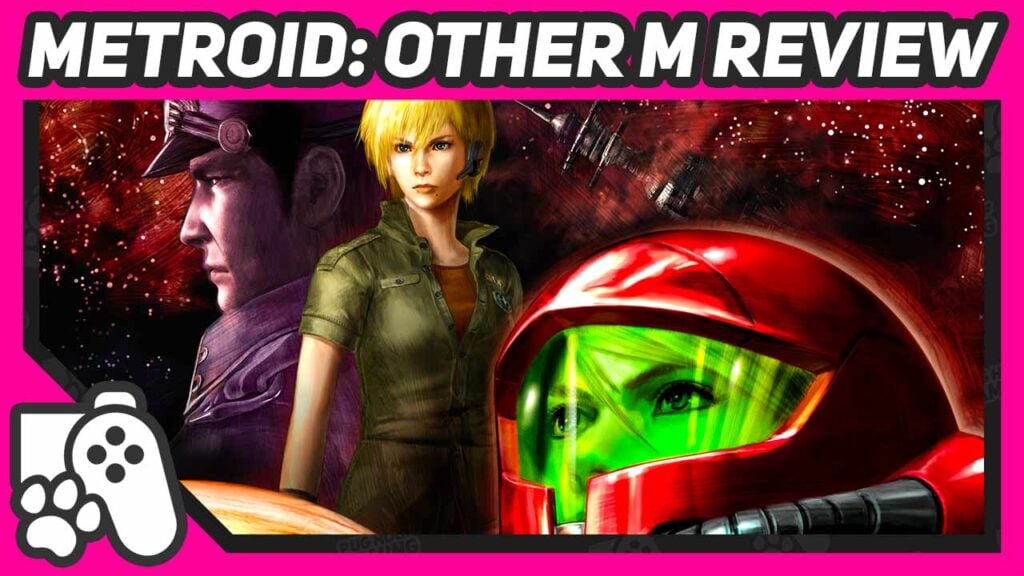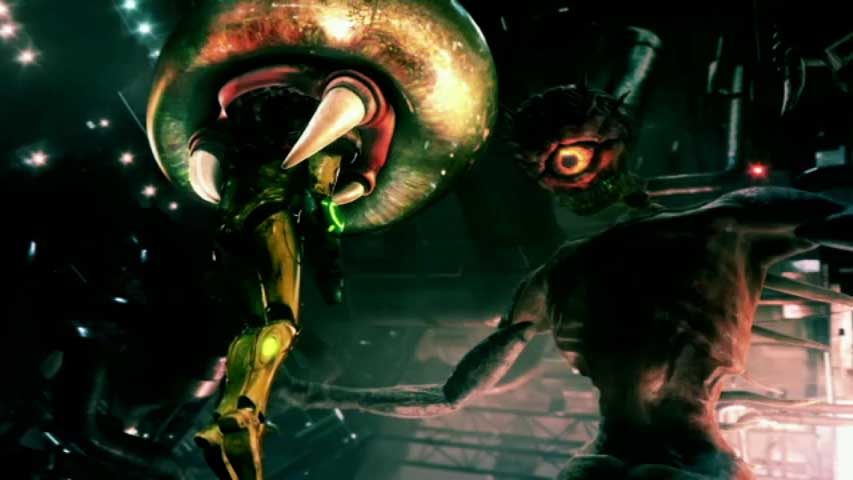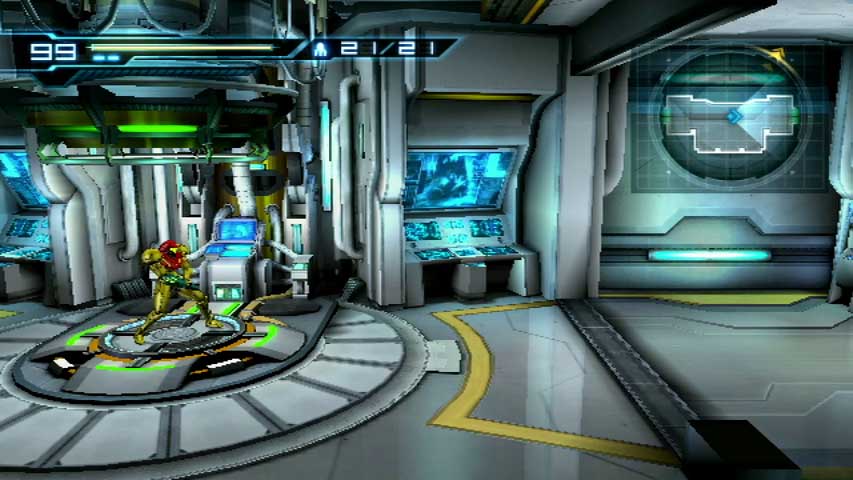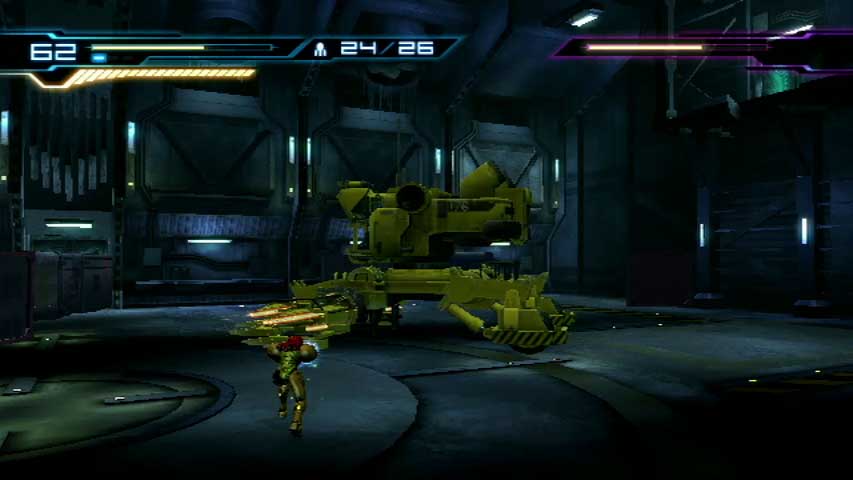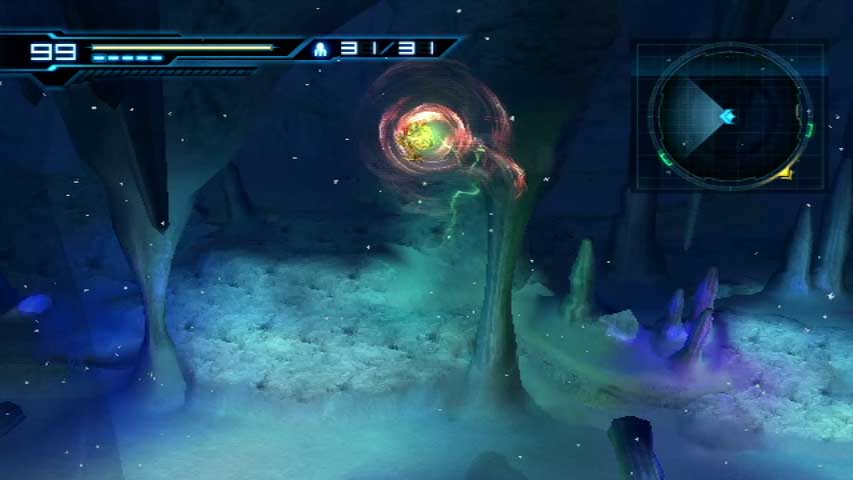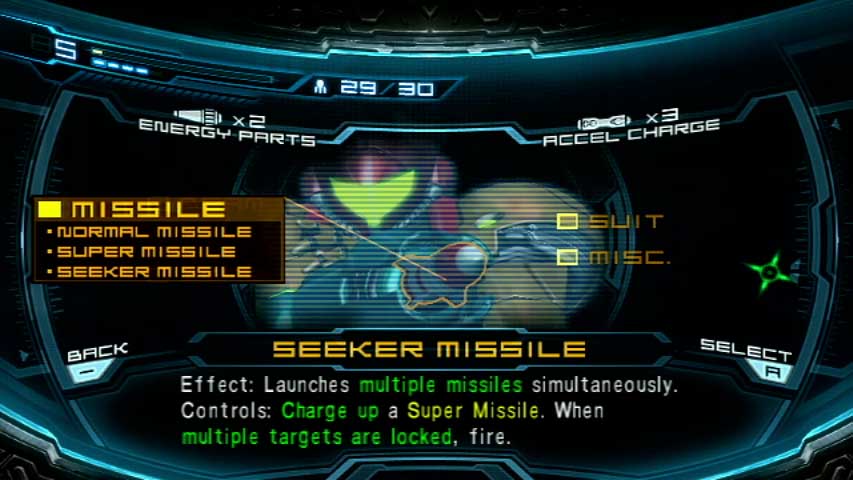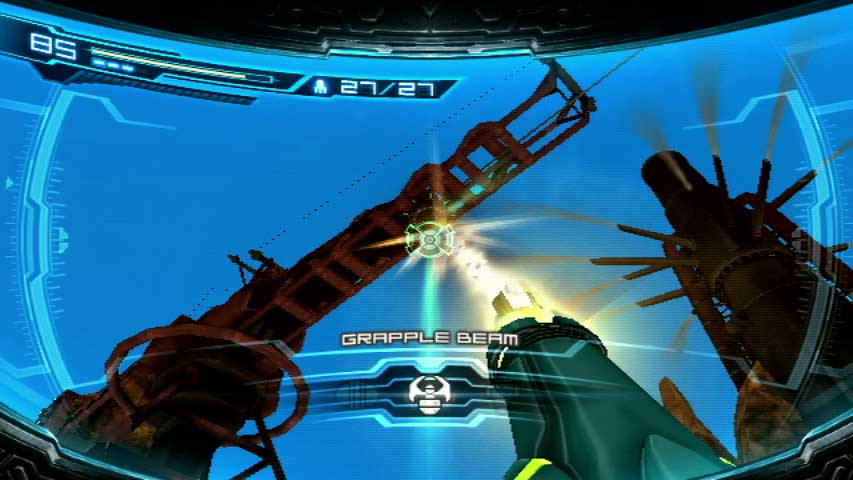Released in 2010, Metroid: Other M is the first Japanese-developed entry in the series since 2002’s Metroid Fusion, and a return to the fold for series co-creator, Yoshio Sakamoto. Additionally, this game is also developed via a collaboration with Team Ninja, the team most famous for their work on the Dead or Alive and Ninja Gaiden series, while a studio named D-Rockets dealt with all of the game’s FMV cutscenes. This goes a long way in explaining why Other M is the way it is – A game that is far more focused on stylistic action, than the exploration the Metroid series is known for.
Metroid: Other M Review
Oh boy, this video’s going to be interesting. I mean, the mere mention of Metroid: Other M is definitely something that sparks an opinion, one way or another. When it comes to my experience, I remember being one of the few Metroid fans at the time that liked this game – But playing it now, I wonder if that was just my memory playing tricks with me. There’s a lot to unpack here, so let’s not waste any time.
Set as a direct sequel to Super Metroid and before the events of Metroid Fusion, Other M takes a look at the consequences of Super Metroid’s ending, and the supposed eradication of all Metroid lifeforms once again. Emotionally affected by the draining battle with Mother Brain and the Metroid Infant’s fatal sacrifice, after Samus is debriefed by the Galactic Federation, she once again departs to find new Bounty Hunting jobs. However, her interest is strangely piqued by a distress beacon from the derelict Bottle Ship, a sprawling Galactic Federation outpost, large enough to hold several artificial ecospheres and a heap of science experiments. Upon arrival, she’s not alone as the Federation have already dispatched a platoon to investigate, with some of its members being former colleagues of Samus’s, including Adam Malkovich, her former commanding officer and a father figure of sorts.
Needless to say, this is more than just a rescue mission, and a particularly murky plot unravels as Samus travels deeper into the Bottle Ship. A lot has been said about this game’s narrative, especially how it treats Samus Aran as a character. A lot of fans were unhappy with the idea of the galaxy’s Bounty hunting saviour being any less than an unstoppable, emotionless badass. Personally, I appreciate that there was an effort to try and paint Samus as a human being whose past exploits have left an indelible mark on her mental health. Just because the earlier games didn’t delve into her emotional psyche, why can’t this one? Many people point to our hero freezing in terror at the sight of Ridley, an enemy she has fought and defeated countless times, as an example of how badly the character is handled. After seeing how trauma can affect people in real life, I wholeheartedly disagree. Ridley is supposedly a creature that has caused a great deal of suffering in Samus’ life – Why shouldn’t she react to seeing its return after she had thought it was dead by her own hand. Games before the 2000’s rarely even attempted to try and approach subjects like this, mainly due to a lack of ability by both consoles and game developers. There is nothing wrong with trying to add nuance to existing characters if done correctly.
However, if you want to be angry at Other M’s narrative, instead be disappointed at how heavy-handed the presentation and dialogue is. This is the first time Samus is given a proper speaking role – Something I am happy with, as unlike a character like Link, for example, Metroid’s protagonist is not supposed to be a blank slate for the player to imprint themselves upon. Unfortunately, the lifeless voice acting doesn’t work for the character at all and comes as a detriment to Other M – Supposedly, that’s due to Sakamoto directing the dialogue recording sessions, even though he doesn’t speak English. A lot has been written about the disparity between the English language version of Other M compared to its original Japanese version, but I’d direct you to Lexicon Lookout’s lengthy video on the subject for a better explanation of the localisation shortcomings suffered by this game.
Ultimately, while Other M’s narrative is more or less easy to follow, with some interesting concepts and attempts to give a greater insight into Samus’ past, as hinted by Metroid Fusion – Unfortunately, it isn’t delivered in a satisfactory manner. The game features some really good-looking FMV sequences, including a pretty cool intro that gives you a CG take on Super Metroid’s final Mother Brain battle, but it does feel that more focus was put into telling a story without thinking about how the game itself fits into that.
So let’s talk about the game, and start with something positive. Other M offers a third-person view of gameplay, working as a happy medium between the 2D environments of classic Metroid titles, while also offering the occasional first-person viewpoint, much like the Prime trilogy. The game is controlled entirely with just the Wii Remote, predominantly played on its side as a two-button pad, and it works great in this manner. The D-pad moves, Button 1 fires, Button 2 jumps and A activates Morph Ball mode. Additionally, tapping the D-pad during an enemy attack will activate something called Sensemove, a stupid name given to the act of basically dodging – However, this will fully charge Samus’ Charge Beam and allow her to fire off a fully charged round immediately. A similar touch of the Dpad can also trigger a lethal strike can also be performed to finish off an enemy near death. With multiple enemies encountered at once on a regular basis, Sensemove does make combat really fun, although ultimately most of the time it’s almost overpowered. If that was all to the controls, I’d be a happy man as Samus controls so fluidly when running around, dodging attacks and firing off shots. Unfortunately, it’s ruined by the addition of the game’s first-person mode.
Pointing the Wii Remote at the screen shifts to this point of view perspective, which is mainly used for firing missiles and unfortunately, this is where the effortlessly stylistic yet surprisingly satisfying combat is ruined by having to constantly shift from a two-handed pad grip to pointing the remote at the screen, when more often than not the reticule is always too far from where you want it to be. In first-person view, you hold the B trigger to shift the view around and lock on to targets and press the A button to fire a shot or missile or hold A to charge up attacks. It’s a finicky mechanic, especially as so many times your reticule will lock onto something you don’t want to target, instead of the enemy that’s trying to kill you. With the combat being so frantic at times, I died way too much by trying to target an enemy with missiles while they were sapping my health with attacks.
Additionally, the game likes to throw you into this first-person viewpoint during story elements, requiring you to look around and find an object of interest before the story progresses. These objects are usually completely inconspicuous and you’ll spend minutes looking around to find the exact group of pixels the game wants you to target before you can proceed. These moments completely break any sense of immersion with either the gameplay or narrative and each time you’ll just be annoyed and wish you could be playing in third-person view for the whole game instead.
Because when Other M lets you do this, it feels like a modern take on classic Metroid. Running between areas, zapping baddies, dodging attacks, somersaulting between platforms and wall-jumping to undiscovered areas is what this game does best and it feels so damn good. When I played this game back in 2010, this is what I remember Other M to be like, while repressing all the bad stuff.
Such as the game’s complete linearity. The entirety of this adventure involves travelling from one Navigation Room to the next as if lessons weren’t learned after Metroid Fusion. With no items available to replenish your health, these rooms act as save checkpoints and the only way to top up your energy, so it’s basically a gauntlet to travel from one Navigation Room to the next. It’s not a bad idea as such, as it does force you to keep pushing on instead of cheesing enemies to restore your health, but it also dissuades you from exploring as well. Sure, there are missile and energy tanks to find if you backtrack, but with the game occasionally blocking you off from some of these areas until the post-game, it’s too much of a hassle and backtracking to get all of these useful items isn’t really required, either. As well as a lack of health-restoring pickups, there’s a lack of missile ammo too as the player can replenish their missiles at any point by tilting the Wii Remote up and holding the A button. Much like the first-person mode, as it takes a few seconds for missiles to be replenished, this is a pain in the rectum during combat scenarios, leading to many unnecessary deaths. On the subject of uncomfortable rears, let’s gloss over the fact that the Missile tanks look like butt plugs.
Similarly to how missiles are replenished, Samus can also restore health – When critically damaged, the player can tilt the Wii Remote up and hold the A button to replenish a small bit of health as well. This can be done over and over again, so long as the player can get enough space from enemies to actually do this before being fatally wounded. So essentially, in between the ability to dodge almost every attack in the game, restore missile ammo at any time and also cheat death, Other M can be a real cakewalk at times. I did die a lot during my playthrough of this game, mostly due to the aforementioned issues with mechanics, but also because this title also throws a heap of instant death situations where you have to dodge one-shot enemy attacks that come at you from literally nowhere. Thankfully, checkpoints are very generous, either throwing you to a nearby Navigation Room or even close to the part you died. Other M in its Normal difficulty mode is far from a difficult game, as I rushed through, barely needing to divert from the linear path to find item pickups as I didn’t really need them. This is one of those games that finishes really abruptly without even a really meaty boss battle to leave you breathless. There’s even some post-credits gameplay that is over almost immediately after it begins – You could go for 100% item completion or even play through Hard Mode, but it’s highly unlikely you’ll feel compelled to.
Being a sequel, Other M wears its Super Metroid aspirations on its sleeve. A heap of enemies return, and their designs look pretty damn good. The garish purples, greens and reds of some of these villains add a little variety to the mostly identikit corridors of the Bottle Ship. However, the bosses are pretty underwhelming in terms of looks and the battles themselves – There’s a lot of waiting for a giant red weak spot to appear and hitting it in first-person view with a missile. Only the mysterious post-game boss provides any real challenge, and I won’t spoil its identity because it is quite a fun surprise for Super Metroid fans. For a location with so many artificial environments, there really is a lot of dull corridors here, but the more interesting areas of note are definitely a relief. For a start, there’s even an area with artificial sunlight and blue skies, something that’s always pleasant to see in a post-2000’s game. There’s definitely a mid-tier, mid-2000’s Japanese style to the presentation. I’m getting a real Metal Gear Solid 2 feel from the menus for some reason, and from the cutscene choreographing, too as it happens. This is the first Metroid game with proper orchestration, and it definitely works to bring that sci-fi epic feel, but as with many orchestral soundtracks, there’s nothing you’re going to remember once you’ve finished playing Other M.
But let’s really stick the knife into this game and talk about the special weapons, abilities and suits you’d expect to find in Other M. Not much, as it seems as aside from a couple of items, Samus already has the lions share of weapons and abilities you’d expect her to – She’s just not allowed to use them. That’s right because Samus is playing the good soldier in Other M, she can’t use some of the more useful tools in her arsenal until her former Commanding Officer, Adam, says so. When you’re looking around in first-person mode, you’ll see objects that’ll tell you it’ll require items like Super Missiles, Grapple Beams or Speedboosts to breakthrough, and the game categorically says that you have these abilities, but you’re not allowed to use them. At various points in the game, there’ll be some need for them, then Adam says you can use the next item, and there is in your inventory. For some items, it makes sense – The Power Bombs are withheld from you for almost the entirety of the game for fears of collateral damage. I don’t have a problem with that, as that’s actually pretty logical. However, is there any reason Samus can’t switch to the Varia suit the moment she encounters heat-filled areas that you are required to fun through, or even skip to the Gravity Suit as soon as you run into areas where the gravity is all out of whack? If Samus is able to use Missiles, is there no reason she can’t use Super Missiles and Seeker Missiles also? Is there really any reason to not allow Samus to use the Grapple beam? If implemented better, it could have been an interesting narrative explanation for not having certain abilities from prior games, instead of Prime’s usual “Samus’ suit gets damaged” excuse. But here, it’s too inconsistent in some cases and full of way too many plot holes.
Maybe this Metroid: Other M review is sounding much harsher than I’d like it to be. There is some really fun and satisfying gameplay in here, buried in all of these poor design, narrative and presentation choices. People forget that this is a release that got quite a few positive reviews at the time, and I really believe that there is enjoyment to be had if you can just push those faults to one side. I’m going to get stick for this in the comments, but even with all of those issues and annoyances, I’d still play this over some of the other Metroid games I’ve covered in this series – As I play each game, I’ve been ranking them for a video once I’m done with all of these games and I guarantee you are going to be very surprised at where this ends up.
A lot of people point to Other M for potentially killing the series for a while, and I don’t think that’s the case. Retro Studios has done their bit for Metroid by this point, and Nintendo probably didn’t have the appetite to develop a new game in-house. I’d kill for a game like Other M that keeps things in third-person, fixes the narrative problems, maybe even add a little more non-linearity to the proceedings. I can get behind a game that’s more action-focused and less about the backtracking and exploration – These are not the aspects that annoy me about Other M. This is a title that is not without merit – There’s a glimmer of something good here, and as a short game you can easily finish in under 7 hours or less, if you like Metroid you should at least boot this up and form your own opinion of this divisive game. Don’t think of this as a bad Metroid game – Accept its glaring flaws and think of this as a flawed attempt at trying something new with the series.
Can you believe we’ve only got four videos left of this series? And can you believe that you probably thought I was going to cover Metroid Prime: Federation Force next? Nope, you’re wrong – Because next episode I’m going to take you through a wholly self-indulgent look at Metroid Blast, the closest thing we have to a Metroid game on Wii U, in the form of a minigame in the system’s launch title – Nintendo Land. See you next week for an altogether lighter video!
